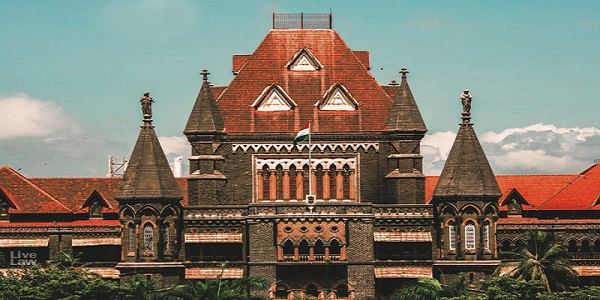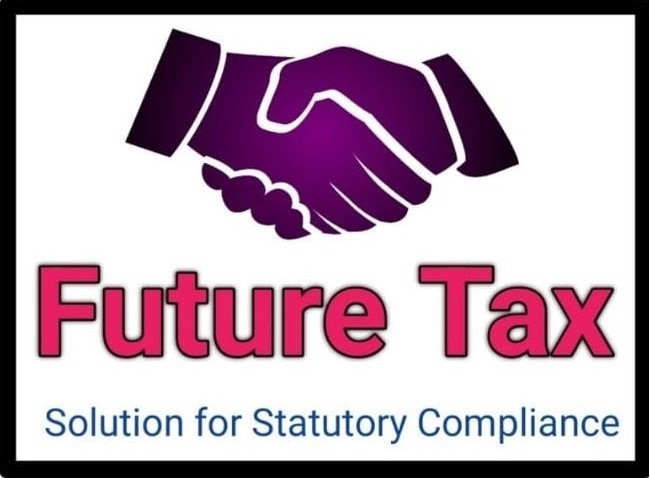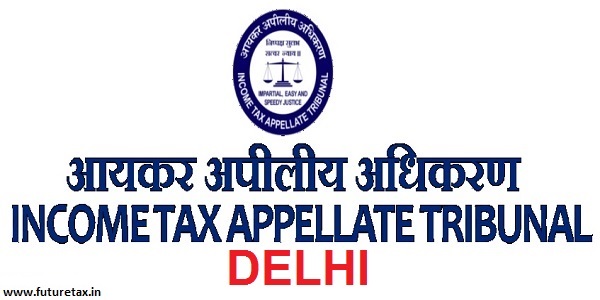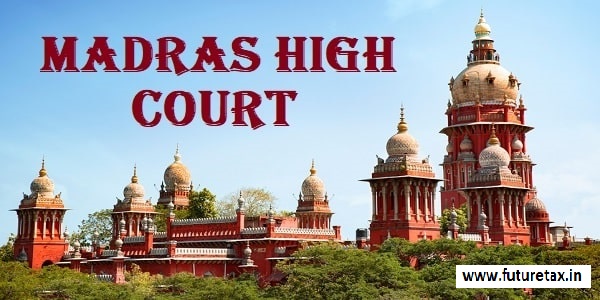
Bombay HC voids reassessment notice for lack of proof of undisclosed material in Tamil
- Tamil Tax upate News
- March 15, 2025
- No Comment
- 32
- 11 minutes read
Hindustan Lever Ltd. Vs R.B. Wadkar (Bombay High Court)
Bombay High Court has quashed a notice of reassessment issued to Hindustan Lever Ltd. under Section 148 of the Income-tax Act, 1961, for the assessment year 1997-98. The court determined that the notice was issued without jurisdiction, as the Assessing Officer failed to establish that the assessee had not fully and truly disclosed all material facts necessary for the assessment.
The case centered on the treatment of stamp duty paid by Hindustan Lever Ltd. following the amalgamation of Brooke Bond Lipton India Ltd. The company had apportioned the stamp duty, treating a portion related to current assets as revenue expenditure, and the balance related to fixed assets as capital expenditure. This apportionment was clearly disclosed in the company’s income tax return and related documentation.
The Assessing Officer had initially accepted the company’s treatment of the stamp duty. However, a later reassessment notice was issued, citing reasons based on judicial precedents that suggested the entire stamp duty should have been treated as capital expenditure. The court, however, found that the reasons provided by the Assessing Officer did not demonstrate any failure on the part of Hindustan Lever Ltd. to fully and truly disclose all material facts.
The Bombay High Court referred to its decision in a related case, Hindustan Lever Ltd. v. R.B. Wadkar, Asst. CIT (No. 1), where it had emphasized the necessity of recording clear reasons for reopening assessments, particularly after the expiry of four years from the end of the assessment year. The court reiterated that unless the reasons explicitly state that income has escaped assessment due to the assessee’s failure to disclose material facts, reopening a concluded assessment is not permissible. In this case, the court concluded that the Revenue could not prove any lapse or failure on the part of the assessee to provide necessary information, and thus quashed the reassessment notice.
FULL TEXT OF THE JUDGMENT/ORDER OF BOMBAY HIGH COURT
1. Rule, returnable forthwith. By consent of the parties, rule is taken up for final hearing.
2. This petition was heard by us along with another writ petition bearing No. 1505 of 2003, Hindustan Lever Ltd. v. R.B. Wadkar, Asst. CIT (No. 1) [2004] 268 ITR 332 (Bom), wherein notice under Section 148 of the Income-tax Act, 1961 (“the Act” for short), dated November 5, 2002, for reopening the assessment for the assessment year 1996-97 was the subject-matter of challenge. That petition was heard along with this petition as the parties were the same and one of the basic grounds of challenge being identical.
3. While deciding Writ Petition No. 1505 of 2003 ([2004] 268 ITR 332 (Bom)), the impugned notice issued under Section 148 of the Act dated November 5, 2002, for reopening the assessment of the assessment year 1996-97 was quashed and set aside by us holding that the said notice was without jurisdiction as the Assessing Officer did not record in the reasons that there was failure on the part of the assessee to disclose fully and truly all material facts necessary for its assessment for that assessment year. While disposing of that petition, we emphasised the necessity of recording reasons and quality thereof and held that unless the reasons disclose that the income chargeable to tax has escaped assessment for such assessment year by reason of the failure on the part of the assessee to disclose fully and truly all material facts necessary for its assessment for that assessment year, it is not open for the Assessing Officer to reopen the concluded assessment after the expiry of four years.
4. In the case in hand, we are concerned with the assessment year 1997-98. The petitioners had filed their return of income for the said assessment year on December 1, 1997, declaring a total income of Rs. 4,09,25,84,500. The computation of income that was enclosed with the return made it clear that out of the total duty of Rs. 23,29,40,000 a sum of Rs. 16,06,58,180 which was attributable to the current assets of the erstwhile Brooke Bond Lipton India Ltd. that stood transferred to the petitioner was treated as revenue expenditure and the balance of Rs. 7,22,81,820 was capitalised and was treated as increase in the cost of the fixed assets for the purposes of claiming depreciation. A specific note was inserted to say that the stamp duty paid related to acquisition of all assets movable as well as immovable, which were conveyed to the company and the same had to be allocated and the allocation was done based on the book value of the assets as disclosed in the audited balance-sheet of the erstwhile Broke Bond Lipton India Ltd. as on December 31, 1995. The covering letter which accompanied the return also made a specific reference to the facts that the stamp duty paid was apportioned between the current and fixed assets and that the amount attributable to the current assets was considered as revenue expenditure.
5. In the course of the assessment proceeding various details were called for by respondent No. 2. One of the issues raised was regarding the allowability of the expenditure incurred by way of payment of stamp duty. In reply to the query raised by respondent No. 2, the petitioner, by its letter dated February 9, 2000, pointed out that Brooke Bond Lipton India Ltd. was engaged in the manufacture and sale of tea and other food products. On an amalgamation the petitioner became liable to pay a stamp duty of Rs. 23,29,40,000 and the same was apportioned over the various assets that stood vested in the petitioner as a result of amalgamation. The stamp duty attributable to the fixed assets had been capitalised and the sum of Rs. 16,06,58,180 which was attributable to the current assets had been claimed as deductible revenue expenditure.
6. Respondent No. 2 completed the petitioner’s assessment by an order under Section 143(3) on February 29, 2000. As against the returned income of Rs. 4,09,25,84,550 he assessed the petitioner to an income of Rs. 5,32,41,67,290. However, he accepted the petitioner’s contention that it was entitled to a deduction of the stamp duty that was attributable to the acquisition of the current assets.
7. Respondent No. 1, thereafter, issued a notice under Section 148 dated September 23, 2002, which was received by the petitioner on October 17, 2002. In the said notice it was stated that respondent No. 1 had reason to believe that the petitioner’s income which was assessable to tax for the assessment year 1997-98 had escaped assessment within the meaning of Section 147 of the Act and, therefore, he called upon the petitioner to file a return of income within thirty days from the date of service of the notice. It is also stated that the notice was issued after obtaining the necessary satisfaction of respondent No. 3.
8. The petitioner by its letter dated November 5, 2002, requested respondent No. 1 to furnish the reasons recorded by him prior to the issuance of the impugned notice so as to enable the petitioner to comply with the requirements of the notice. The petitioner did not hear anything from respondent No. 1 and as the time for furnishing a return was coming to an end, the petitioner by its letter dated November 14, 2002, pointed out that although the proceedings initiated were without jurisdiction, the return was being filed without prejudice to its contentions and legal right to challenge the notice and respondent No. 1 was again requested to treat the return filed on December 1, 1997, as a return filed in pursuance of the notice under Section 148.
9. The petitioner, thereafter, did not hear anything from respondent No. 1. However, respondent No. 2 vide his notice dated December 3, 2002, under Sections 142(1) and 143(1) called upon the petitioner to make its submissions as to how the sum of Rs. 16.07 crore was allowable as a revenue expenditure. In this connection he had relied upon the judgment of the Gujarat High Court in CIT v. Official Liquidator, Ahmedabad Manufacturing and Calico Printing Co. Ltd. [2000] 244 ITR 156 wherein it has been held that expenditure incurred in connection with an amalgamation scheme is to be treated as capital expenditure. He has also relied upon a decision of the Supreme Court in Punjab State Industrial Development Corporation Ltd. v. CIT [1997] 225 ITR 792 that any expenditure incurred for widening the capital base has to be treated as capital expenditure and as the amalgamation has resulted in the widening of the capital base of the petitioners expenditure incurred ought to be disallowed. He has also referred to a decision of the Calcutta High Court; wherein it was held that stamp duty, registration charges, etc., incurred in taking over another concern is capital expenditure. The petitioner by their letter dated December 9, 2002, addressed to respondent No. 2 asked for some time to file reply and reiterated its request that the reasons recorded prior to the issuance of the impugned notice be furnished to it.
10. In spite of the repeated requests, the respondents did not furnish reasons, if any, alleged to have been recorded by respondent No 1 prior to the issuance of the impugned notice. Hence, the petitioner filed this petition under article 226 of the Constitution of India to challenge the impugned notice dated September 23, 2002.
11. On being noticed, the respondents appeared and filed their counter affidavit disclosing the reasons recorded prior to issuance of the notice under Section 148. The said reasons recorded read as under :
“It is seen from the details on record that the assessee-company paid stamp duty of Rs. 23.29 crores on merger of M/s. Brooke Bond Lipton India Ltd., with it. However, out of the said amount, the assessee-company capitalised in its books only an amount of Rs. 6.62 crores as being attributable to capital assets. The balance amount of Rs. 16.67 crores was claimed/allowed as revenue expenditure relating to current assets such as stocks, etc. However, in the case of CIT v. Official Liquidator, Ahmedabad Manufacturing and Calico Printing Co. Ltd. [2000] 244 ITR 156, the hon’ble Gujarat High Court held that any expenditure incurred in connection with an amalgamation scheme is to be treated as capital expenses. Further, the hon’ble Supreme Court of India in the case of Punjab State Industrial Development Corporation Ltd. [1997] 225 ITR 792 has held that any expenditure incurred for widening capital base is to be treated as capital expenditure. In the present case, the abovementioned merger resulted in widening of capital base of the assessee-company. In the case of Gobind Sugar Mills Ltd. v. CIT [1979] 117 ITR 747, the Calcutta High Court held that stamp fee, registration charges, etc., incurred in taking over another concern was capital expenditure.
In the light of the foregoing discussion, it is apparent that treating of the amount of Rs. 16.67 crores of stamp duty as revenue expenditure was erroneous and the same resulted in underassessment of income in the assessment completed under Section 143(3) on February 29, 2000. In view of these facts and circumstances, I have reason to believe that income chargeable to tax has escaped assessment within the meaning of the provisions of Section 147 of the Income-tax Act. It may also be mentioned that an order under Section 263 was passed by the Commissioner of Income-tax-I on March 26, 2002, in regard to the issues like valuation of closing stock and recomputation of deduction under Section 80HHC. Thus, remedial action is now proposed under Section 147 of the Income-tax Act, 1961.”
12. The petitioner submits that the disclosure of reasons would make it clear that no failure on the part of the petitioner to disclose fully and truly all material facts necessary for its assessment for that assessment year has been alleged as such the notice is hit by the proviso to Section 147 and the same being beyond the period of four years from the end of the assessment year is unsustainable in law much less the same is without jurisdiction. We find that the submission made is well sustainable. It is not in dispute that the proviso to Section 147 of the Act is applicable to the facts of this case and the notice is without jurisdiction. The same view is taken by us while deciding connected Writ Petition No. 1505 of 2003 ([2004] 268 ITR 332 (Bom)). Thus, for, the reasons stated in our judgment dated February 25, 2004, delivered in Writ Petition No. 1505 of 2003 ([2004] 268 ITR 332 (Bom)), we quash and set aside the notice dated September 23, 2002, issued under Section 148 of the Act holding it to be without jurisdiction. Even otherwise, having examined the facts and the proceedings it is clear that the Revenue could not establish any lapse or failure on the part of the assessee-petitioner to disclose fully and truly all material necessary for the assessment of the petitioner for the assessment year in question.
13. In the result, the petition is allowed. Rule is made absolute in terms of prayer Clause (a) with no order as to costs.




